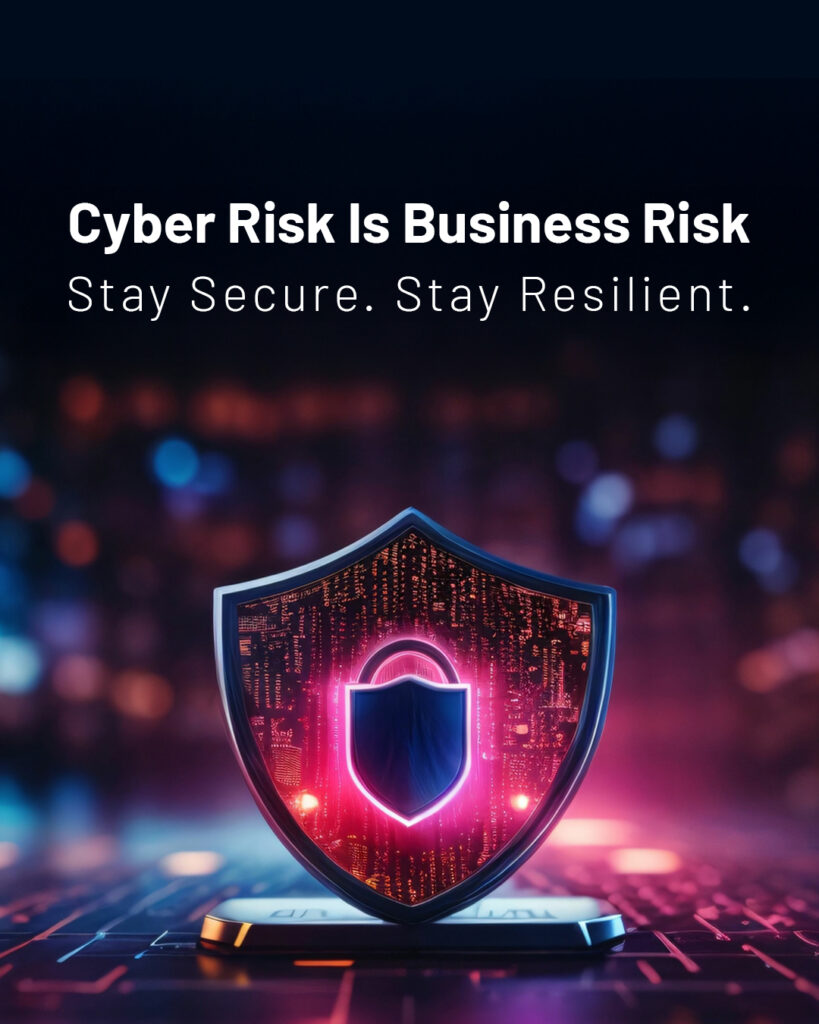October marks National Cybersecurity Awareness Month (NCAM), a time for organizations to evaluate how they are protecting operations, reputation, and client trust. This year’s NCAM theme, Secure Our World, highlights the Core Four fundamentals: strong passwords, multi-factor authentication, phishing awareness, and regular updates. These practices are important for every workplace, but for executives and business owners, the focus should extend further. Cybersecurity is a business risk management issue that directly influences continuity, client confidence and enterprise value.
The Threat Landscape Today
Cyberattacks are becoming faster and more sophisticated. Recent research shows some alarming trends that highlight how quickly threats are evolving:
- The average breakout time for adversaries is 48 minutes, with the fastest intrusion spreading in just 51 seconds.
- Nearly 79 percent of detections in 2024 were malware-free, relying on compromised credentials and other identity-based methods.
- Voice phishing, or vishing, increased by 442 percent in just six months.
- Cloud intrusions grew 26 percent year over year as attackers targeted valid accounts.
These figures highlight a shift from traditional malware to stealthier techniques that target trust and identity. A phishing email, a fraudulent phone call or an exploited vendor connection can open the door to disruption in minutes. Businesses that rely on slower detection tools or manual response processes are already behind by the time an alert is raised.
For executives, this means resilience is no longer about prevention alone. The real measure is how quickly the organization can detect, contain and recover from an incident without halting operations or damaging client confidence.
What Business Leaders Need to Consider
1. Resilience as a Strategic Priority
Protecting systems and data is essential, but the broader goal is ensuring continuity of service. Leaders should build incident readiness into enterprise planning so the organization can operate even during disruption.
To strengthen resilience, consider:
- Creating and testing an incident response plan that includes business and IT leaders.
- Developing recovery playbooks to guide teams through critical scenarios.
- Running tabletop exercises regularly to test decision-making and communication.
For companies seeking investment or preparing for M&A, resilience is also a marker of enterprise value.
2. Vendor and Third-Party Risk
Businesses increasingly depend on suppliers, cloud platforms and managed service providers. Weaknesses in those networks can become weaknesses for your own business. Strong vendor oversight reduces exposure and demonstrates accountability to clients and regulators.
To improve third-party risk management:
- Conduct regular vendor security assessments.
- Build clear security requirements into contracts and agreements.
- Monitor ongoing vendor performance and access, not just at onboarding.
3. Culture of Awareness
Technology alone will not prevent every attack. Employees remain the first line of defense, especially against phishing and social engineering. Practical, continuous training builds vigilance and a sense of shared responsibility.
To strengthen your culture of awareness:
- Provide regular, role-specific training for employees at all levels.
- Run phishing or vishing simulations to test recognition and response.
- Address MFA fatigue by teaching employees not to approve requests they did not initiate.
4. Balancing Cost and Protection
Cybersecurity investments can feel expensive, particularly for mid-sized organizations, yet recovery from an incident is consistently more costly. The right approach is proactive, targeted, and cost-effective.
To balance investment and protection:
- Schedule recurring risk assessments to identify priority areas.
- Explore co-managed monitoring services to extend the reach of internal teams.
- Review cyber insurance policies to ensure coverage aligns with real risks.
Moving From Awareness to Action
Cybersecurity Awareness Month is more than a reminder of fundamentals. It is an opportunity for leaders to evaluate how cyber risk management supports business strategy and resilience. For CEOs, the priority is protecting client trust and enterprise value. For CIOs and IT leaders, it is about maintaining uptime and compliance while managing limited resources. For risk and compliance executives, it is gaining visibility across the enterprise and providing assurance to boards and investors.
By making cybersecurity a leadership priority, organizations improve risk reduction, shorten recovery, and strengthen resilience when threats accelerate. Leaders who embed cyber risk into strategy also protect customer trust, support compliance and secure enterprise value as risks continue to accelerate.
Contact Us
Contact Withum’s Cyber and Information Security Services Team to learn more about how we can support your organization with cyber risk management and strengthening business continuity.




